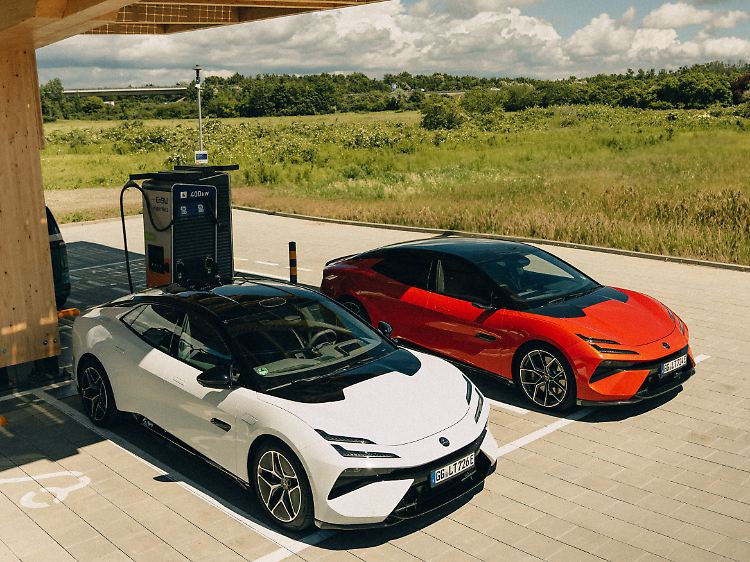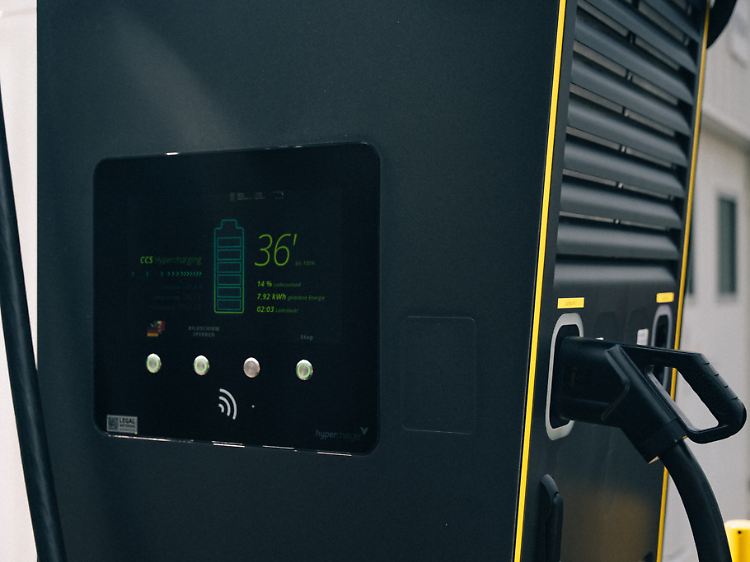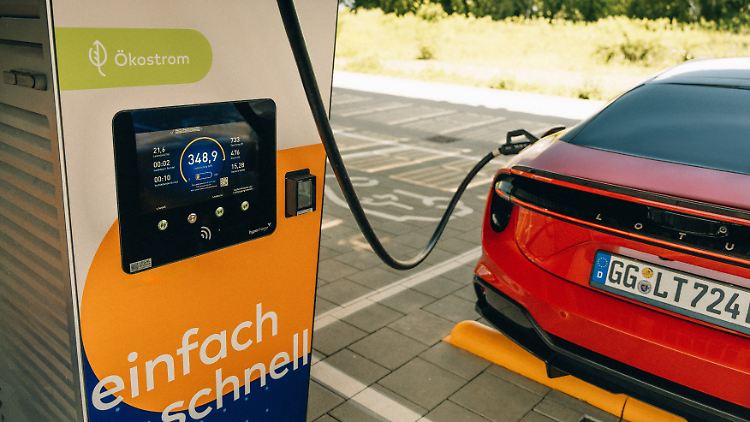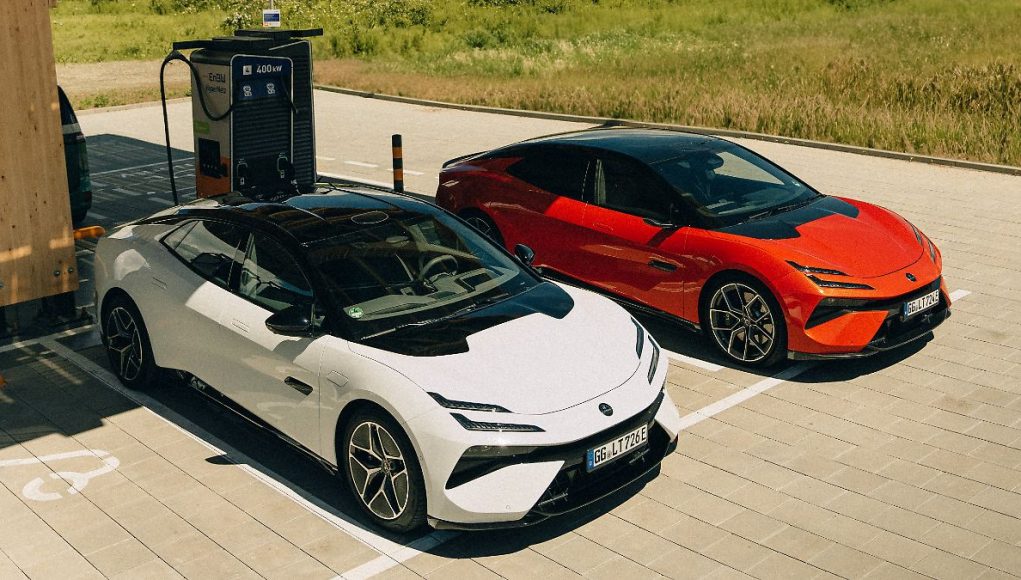Fast charging with 400 kW
Lotus Emeya – from 10 to 80 percent in 14 minutes
This audio version was artificially generated. More info | Send feedback
Thanks to their 800-volt electrical systems, Porsche, Hyundai and Kia are the kings of fast charging – so far. Geely subsidiary Lotus now wants to dethrone them with the help of an advanced battery architecture.
In addition to the range, the charging performance is an important argument when buying an electric car. The shorter the charging stop, the faster you are back on the road. After the latest revision, the Porsche Taycan promises the best charging performance. With a peak of 320 kW, the Swabian charges its 105 kWh battery from 10 to 80 percent in 18 minutes. But this best value is already obsolete. A rival from Lotus significantly beats the Stuttgart-based car's time in the charging sprint.


Sufficiently fast charging stations are still rare.
(Photo: Lotus)
The new Emeya from the British-Chinese manufacturer improves the time from Stuttgart by almost 25 percent. The fully electric GT charges its 102 kWh battery from 10 to 80 percent in 14 minutes under optimal conditions. Provided it is connected to a 400 kW fast charging station with 600 amps, which is currently not very common. In the ideal case, the average charging power is then around 330 kW, so that the Emeya draws energy for a range of 310 kilometers in 10 minutes.
More battery cells in the same space


Operators such as EnBW and Fastned already have the first columns connected to the grid.
(Photo: Lotus)
To achieve these charging times, Lotus uses an advanced battery architecture with 800 volts, which accommodates 20 percent more cells in the same space than conventional modular designs. A more effective cooling system is also used, which improves heat dissipation and the efficiency of the battery. In addition to halving charging times, the technology offers other advantages. Thinner insulation and cable cross-sections save weight and installation space.
Such a rapid charging speed is only possible with a suitable 800-volt charging station, the so-called ultra-fast chargers or high-power charging (HPC). Many charging parks are already equipped with 350 kW stations. But in order to exploit the full potential of the Lotus, the operators must continue to upgrade and enable charging capacities of 400 kW. The first stations from providers such as EnBW and Fastned are already on the grid.


For faster charging times, Lotus uses an advanced battery architecture with 800 volts.
(Photo: Lotus)
The 800-volt technology is still reserved mainly for high-priced models. The Lotus Emeya costs at least 106,000 euros, a Porsche Taycan is available from 101,500 euros. But Kia and Hyundai show with models such as the EV3 or the Ioniq 5 that you don't have to belong to the automotive upper class to enjoy short charging times.
More and more manufacturers are announcing an 800-volt electrical system for their electric models. This is good news for electric car drivers. Long-distance trips with electric cars without long and nerve-wracking charging stops will become more likely for more and more drivers in the future.































